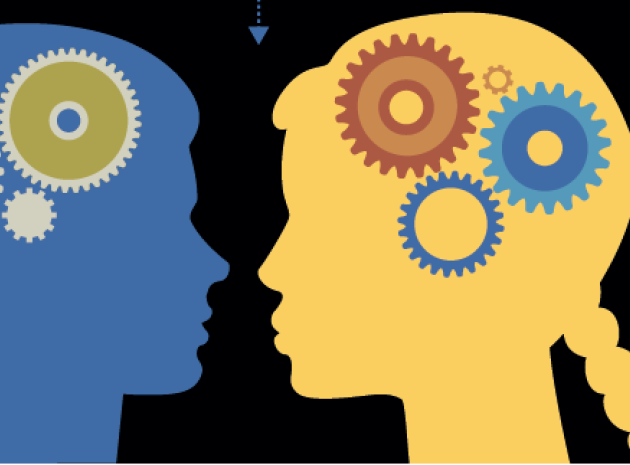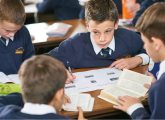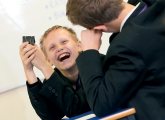A few basic NFL techniques could make a huge difference to your MFL classroom, suggests Mike de Val…
Neuro-linguistic programming was developed in the 70s by two University of California academics, John Grinder and Richard Bandler. They had observed effective therapists at work and modelled their therapy techniques, applying them to personal development, communication and learning. NLP emphasises the use of all our senses in the learning process, and stresses the importance of the emotional and psychological state the learner needs to be in to learn successfully. Its principles can be successfully applied to the teaching of any subject – but perhaps especially so for MFL.
Who do you think you are?
A useful starting point for MFL teachers is NLP’s emphasis on the importance of the beliefs and values both the teacher and the student bring to the learning process. The choice of words and phrases you use in the classroom – both within the target language and English - is critical. Does it reflect that you are a fellow learner? Does it encourage? Does it gain cooperation in the learning process?
- When you use language, consider phraseology that can subtly shift learners’ perspectives on themselves and the task in hand:
- Make your students feel ‘expert’
- ‘…. As language students you will already know that….’
- Make your students feel cooperative
- ‘…now would be a good time to….wouldn’t it?’
- Arouse curiosity through questions and encourage speculation and challenge
- ‘….what if ’
- Make the student feel an equal in the learning process
- …can you help me out with some ideas…?’
Because teaching MFL involves both a ‘task’ and a ‘relationship’ you have to be clear about your own identity and purpose. In class are you ‘The Director’ or ‘The Fellow Learner’ or something else? Your choice of language reflects how you see yourself and this impacts on students. In NLP terms, it is called ‘modelling’. You ‘model’ the learning role you want to see, hear and feel in your students.
Getting in a state
Student readiness to learn or ‘learning state’ is also important in MFL with its emphasis on participation and verbal communication. What would you say is your best learning state? Do you know the corresponding answers for your students? According to Robert Dilts, who runs the NLP University based on the U.S. West Coast, “the state of a person’s physiology is as important as the instructional material they are given”. Experiment for a moment. Can you remember a time when you were able to learn easily and effectively? Imagine yourself fully back in that experience with its sights, sounds and feelings. Do you notice any change in your posture in your arm and shoulder position or your head angle? Now contrast that with a time when you were stuck or distracted. How does it differ? Make a note of which physiological state is your best learning state. Do the same thing with your eyes. Do you look down, up, left or right when at your best? What about when you are stuck? Try these approaches on yourself first, then observe your students and notice how their physiology reflects alertness. Which previous lesson went well and what were the postures of key individuals? Adjust your approach.
- Play with some of these relaxation and language techniques and see what makes the difference:
- Physiology Encourage students to remember a time when they learned something new easily, and notice their posture. “I can tell you’re focused because….”
- Relaxation Gentler tonality and encouraging language makes a difference: “….that’s right…that’s good….”
- Develop ‘yes sets’ These encourage an affirmative response by asking two questions with an obviously affirmative answer followed by a third which paces learners to another ‘yes’, but this time to an important task or behaviour.
- Open up their peripheral vision Create a state that supports suggestibility and openness. “Find a spot on the wall and rest your eyes on it then relax the muscles around your eyes….that’s right…As they relax, and keeping your eyes on the spot, you can begin to notice things that are both to the left and the right. This is your peripheral vision. Now bring your eyes back to focus on the learning in hand.”
The Feedback Frame
When you use French in France you get immediate feedback (albeit maybe not always what you expected!) - and it is so much more effective than judging something ‘incorrect’. A ‘failure frame’ emphasises what someone has done wrong. A ‘feedback frame’ emphasises what to do in order to be effective. If you create a situation where there is an immediate consequence to the words of the target language then you are giving and receiving immediate feedback. Bring instant feedback into your classroom. This involves the learner imitating without necessarily initially fully understanding by matching the tone, physiology and non-verbal cues of the speaker. Just about anyone can tell whether an utterance was a question, a piece of information-giving, an outburst or something else. How? NLP emphasises that meaning comes primarily from the representations we ‘anchor’ to it. The sights, the sounds and the feelings that a phrase or word triggers in the student’s mind are more powerful ways of learning and retaining because they engage his or her whole ‘neurology’- visual, auditory and physical. Language learning involves non-verbal messages too. These are called ‘meta’ messages and they can support learning and the acquisition of meaning. They use more of our ‘sensory capacity’ increasing the effectiveness of our learning. Ever imitated that Frenchman’s shoulder shrug? His hand gestures? His tone? And got the meaning without a direct translation?
- Here are some ideas you can use to bring more immediate feedback into your teaching:
- The teacher/native speaker works with a modeller and an observer. The speaker employs the target phrase to be acquired and the physiology and tonality that goes with it.
- The 2nd person ‘models’ the sound and actions and repeats.
- The 3rd person observes and corrects and adjusts the 2nd person’s repetition until they get the best ‘match.’
- Using their intuition the 2nd person guesses the meaning of the phrase.
- The native speaker /teacher coaches by saying whether the overall meaning is correct (a question/ information etc) not just the content
The vocab test
These principles can also be brought to the acquisition of vocabulary. Here too you can build on the power of connecting words to ‘reference experiences’. Doing this effectively ‘anchors’ the vocabulary item to a sight, sound and sensation. Rather like speed reading, you don’t always need to translate what you see into the spoken language to derive meaning. In NLP terms, this ‘not knowing’ state actually rids us of some of the assumptions and preconceptions about language learning, like reliance on direct translation or exclusively visual memorisation. Giving someone an experience then giving the experience a name is a natural sequence in learning and reflects how children learn a language. In the following ‘objects and actions’ sequence there is no such thing as a mistake. The students use more of their ‘neurology’-their sensory capacity- playing with what they are learning in a context of fun, curiosity and exploration.
- This way more is retained.
- The teacher (the model) makes a list of six specific objects and six specific actions or activities that are easy to act out (on separate pieces of paper) based on what is in the immediate environment. The objects and actions should be capable of being put together e.g ‘ecrire’ and ‘tableau.’
- The model shows and pronounces the word. If an object s/he draws or points to it, if an action s/he acts it out. Repeat three times.
- When the word is spoken the student must mimic the pronunciation and expression (including gestures).When the word is shown in writing the student must copy the characters (at first by looking and then from memory).
- Once the student is familiar with all the words the model may show the word and require the student to pronounce it or say the word and require the student to write it
- Then the student must act out the indicated action to or with the indicated object adding articles and conjunctions as needed. If s/he makes a mistake then the words are presented again and demonstrated by the model.
- Once the student has mastered all of the combinations by pairing single objects with single actions then the model can vary by stringing together combinations of objects and actions.
About the Author
Mike de Val taught Modern Languages for eight years before becoming an education officer and latterly chief education officer in a Welsh Authority; he is now a coach and trainer working in the private and voluntary sectors.










